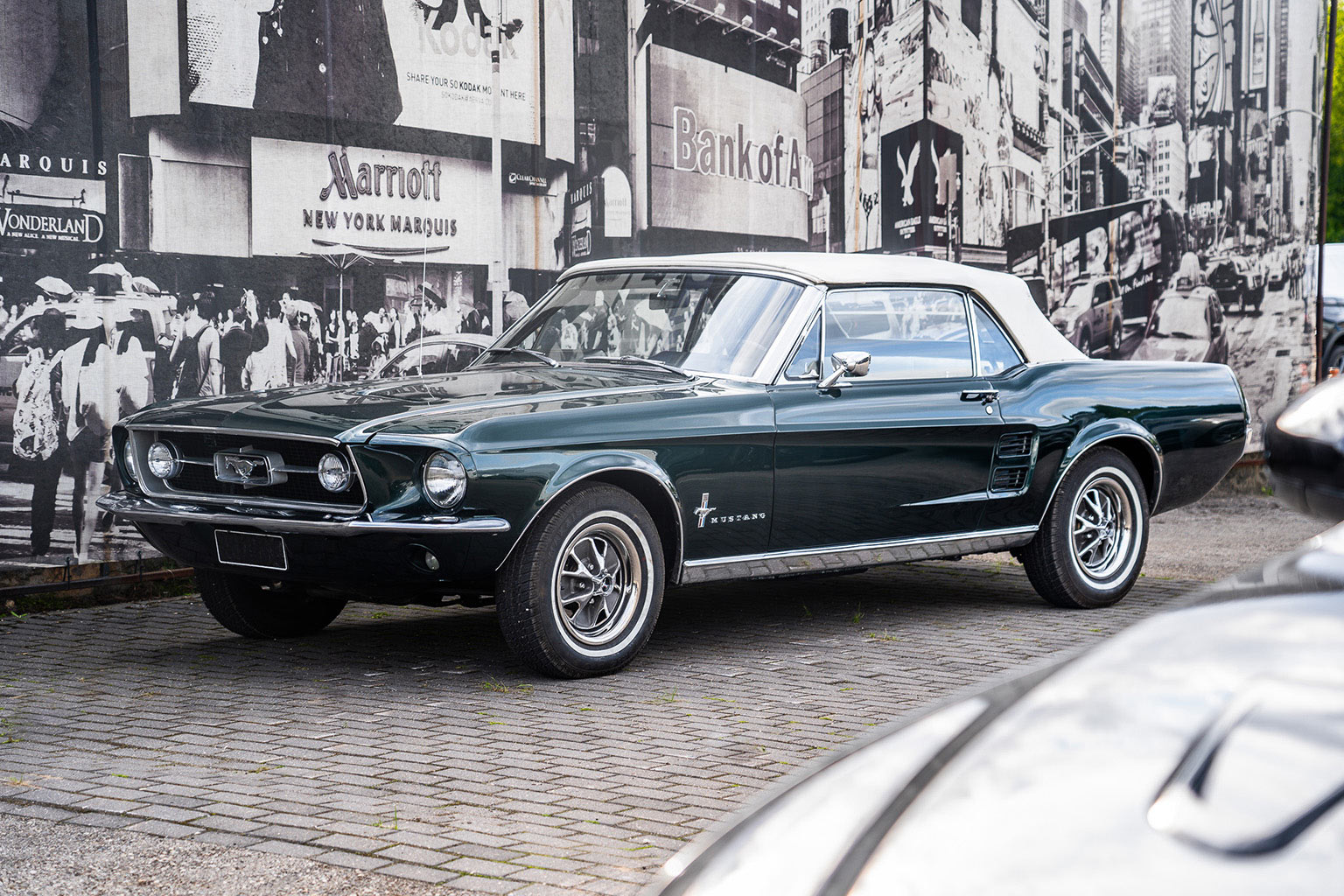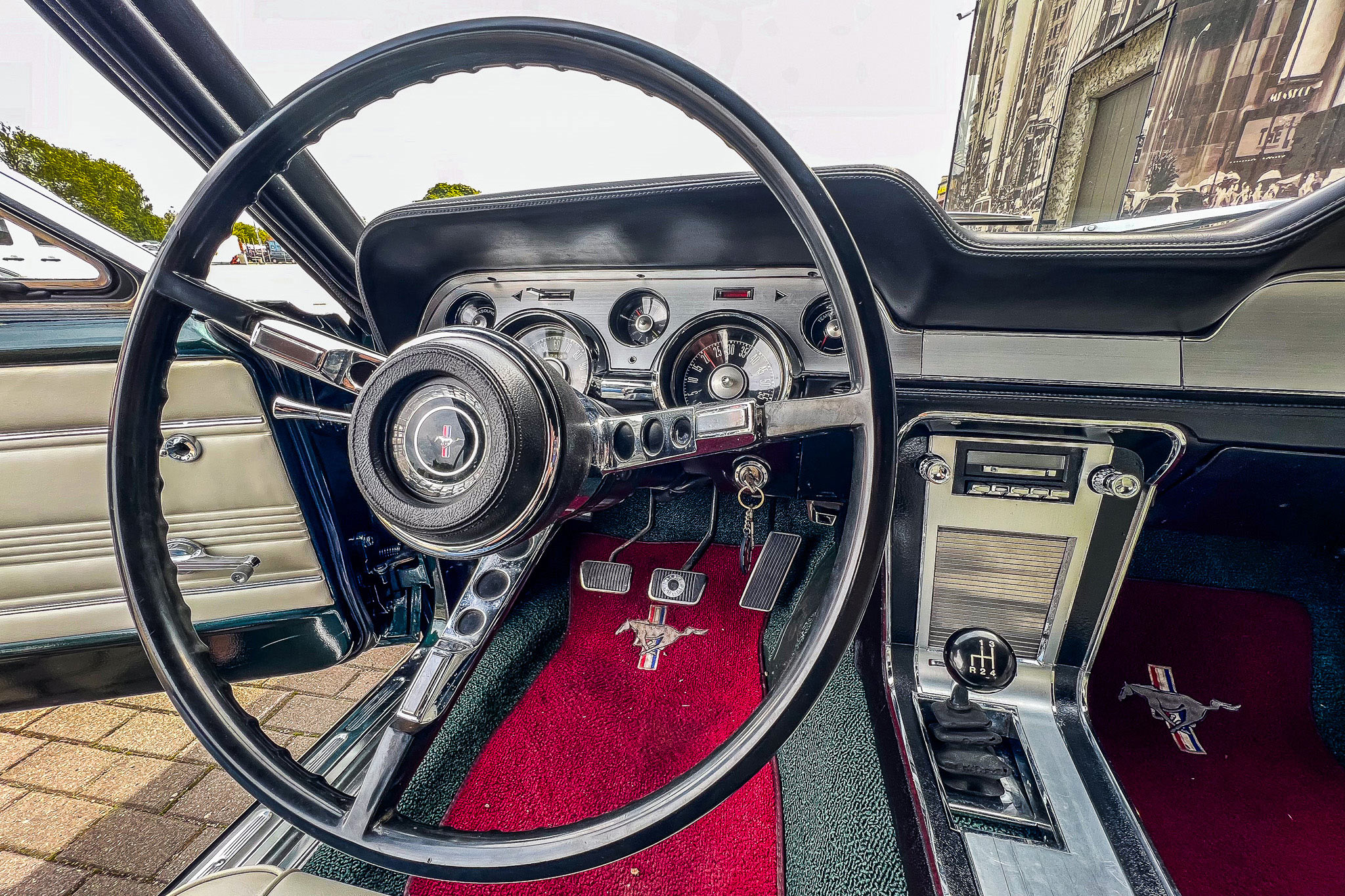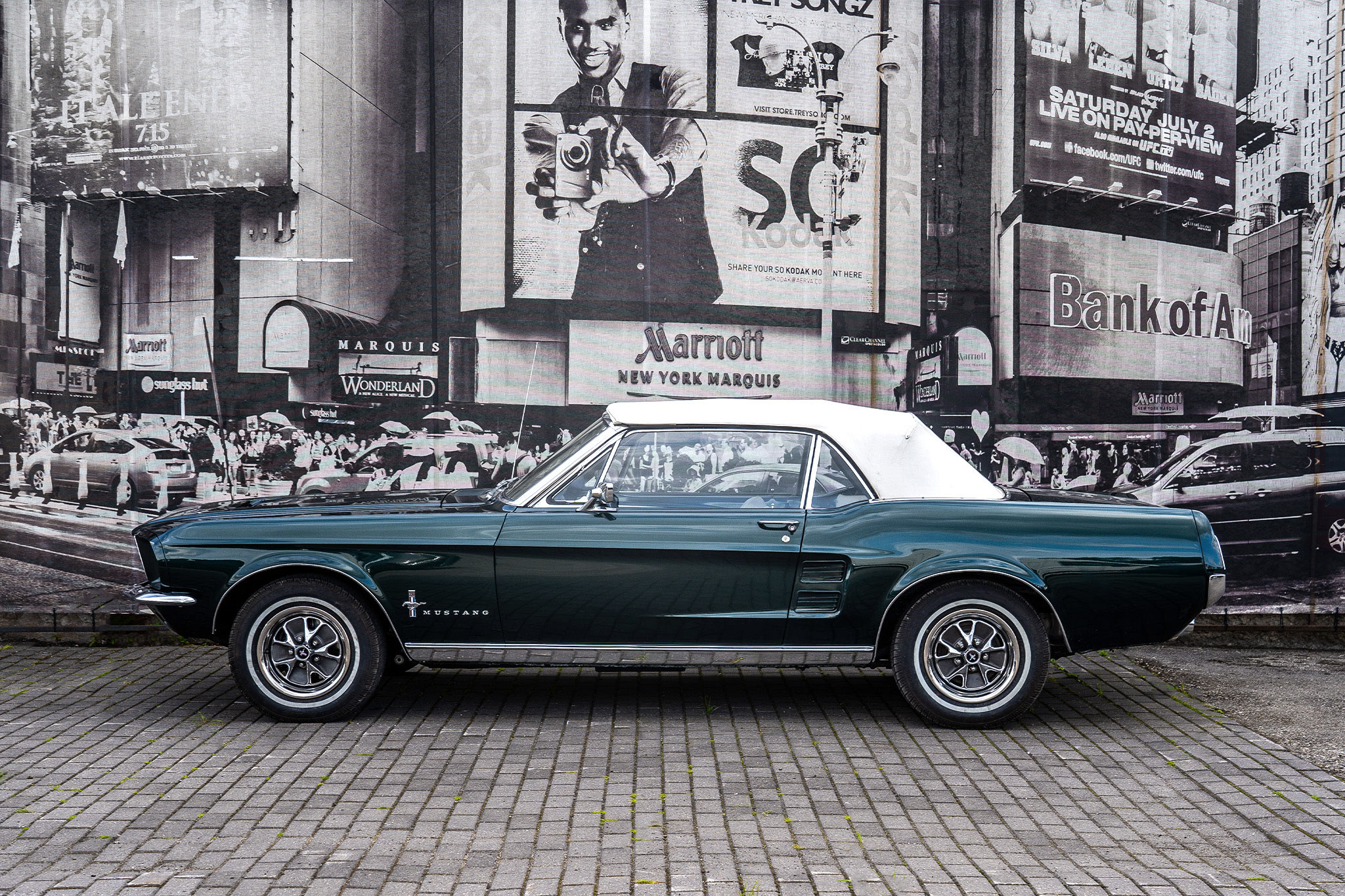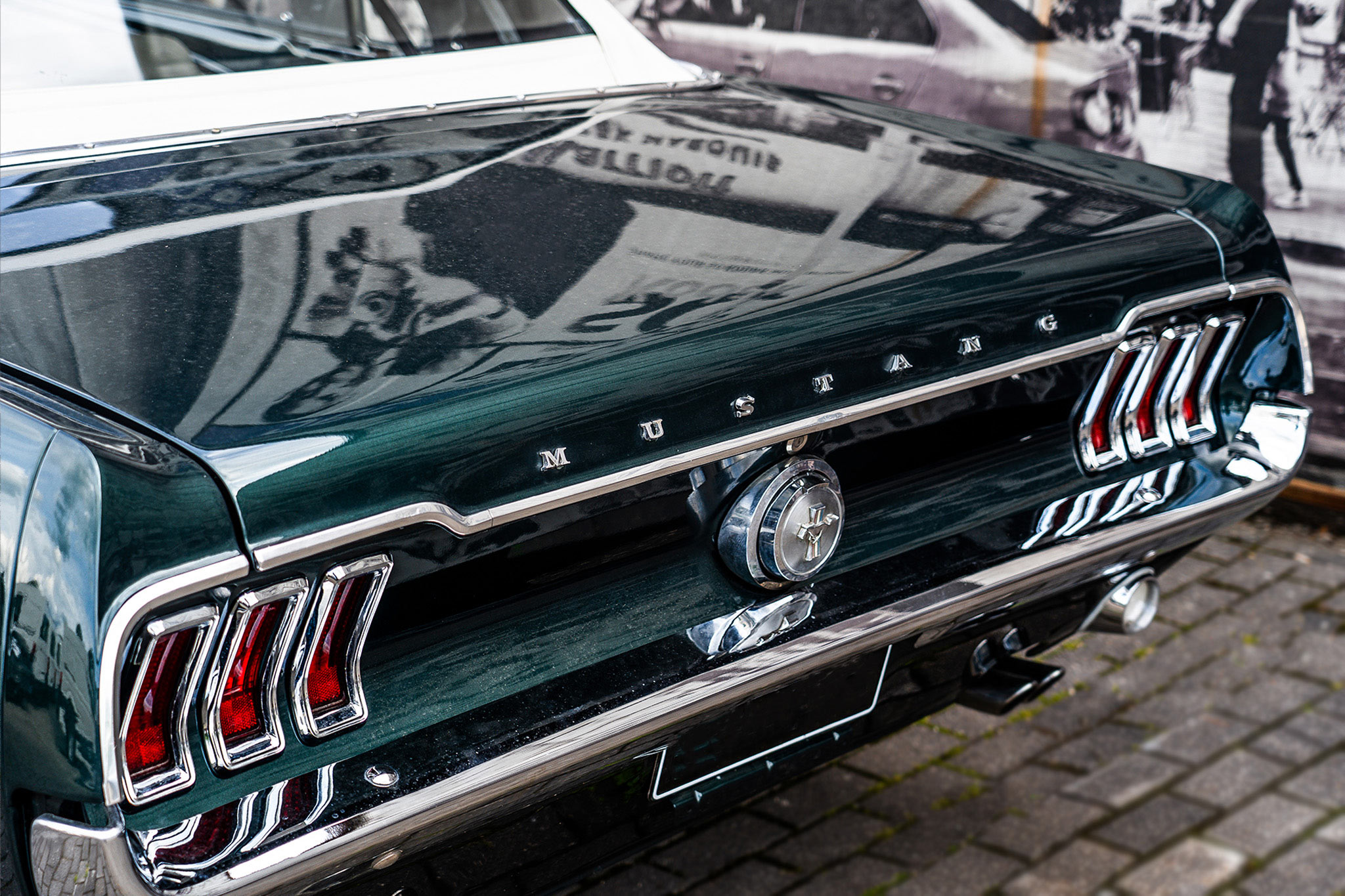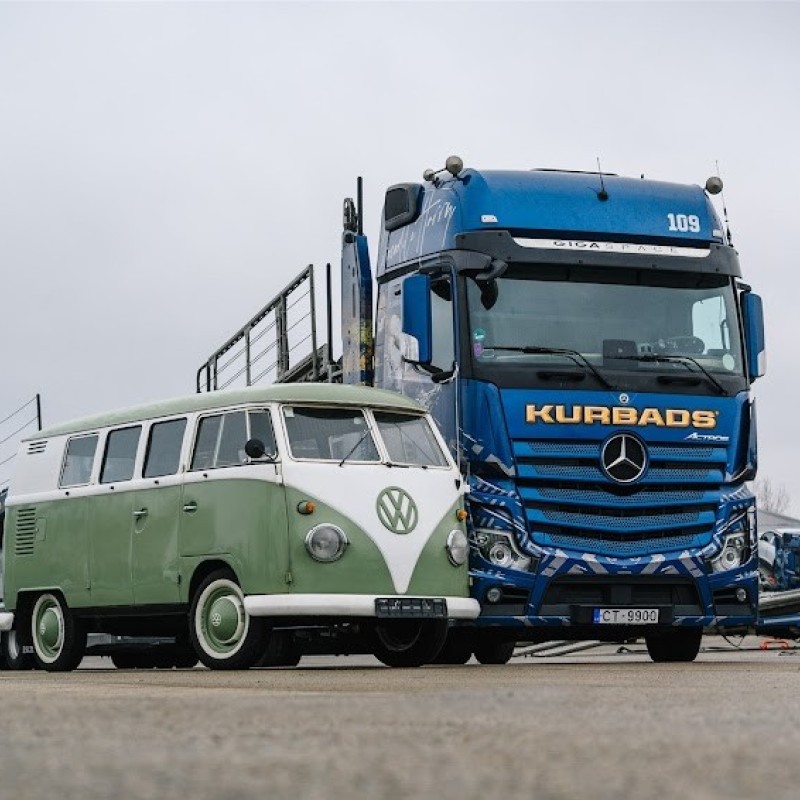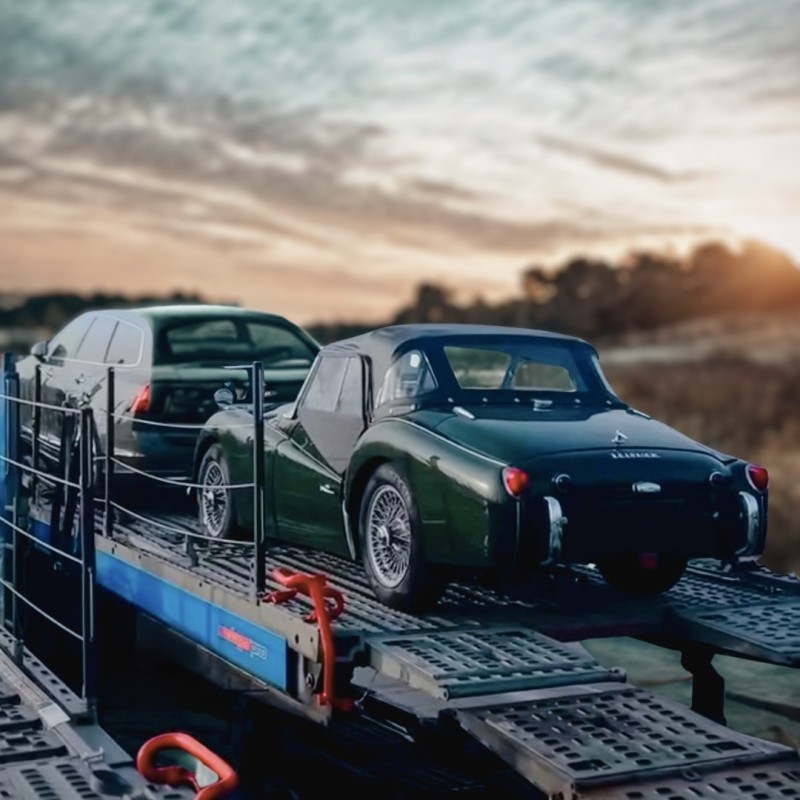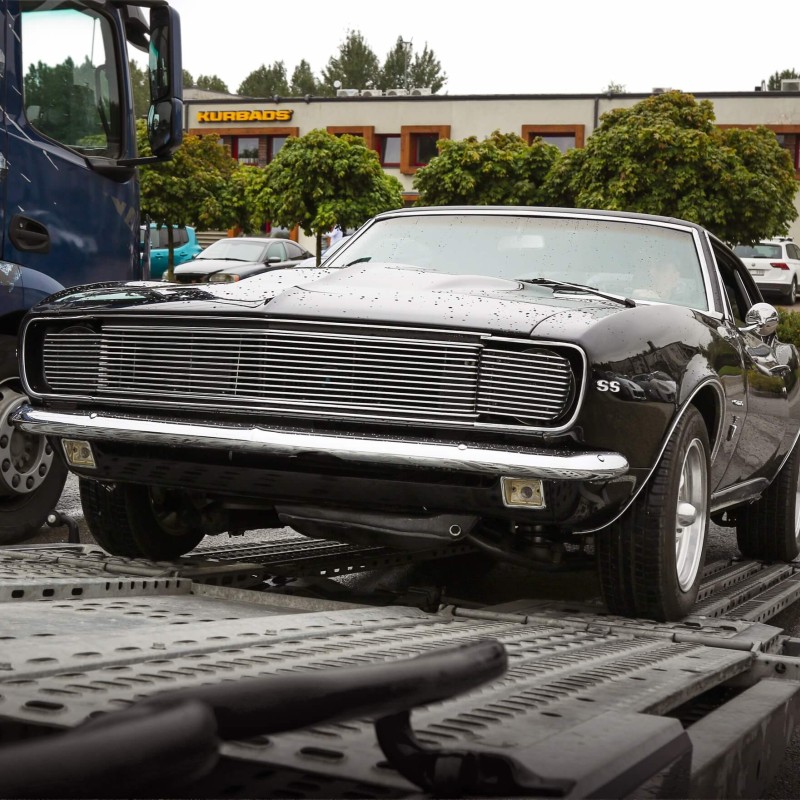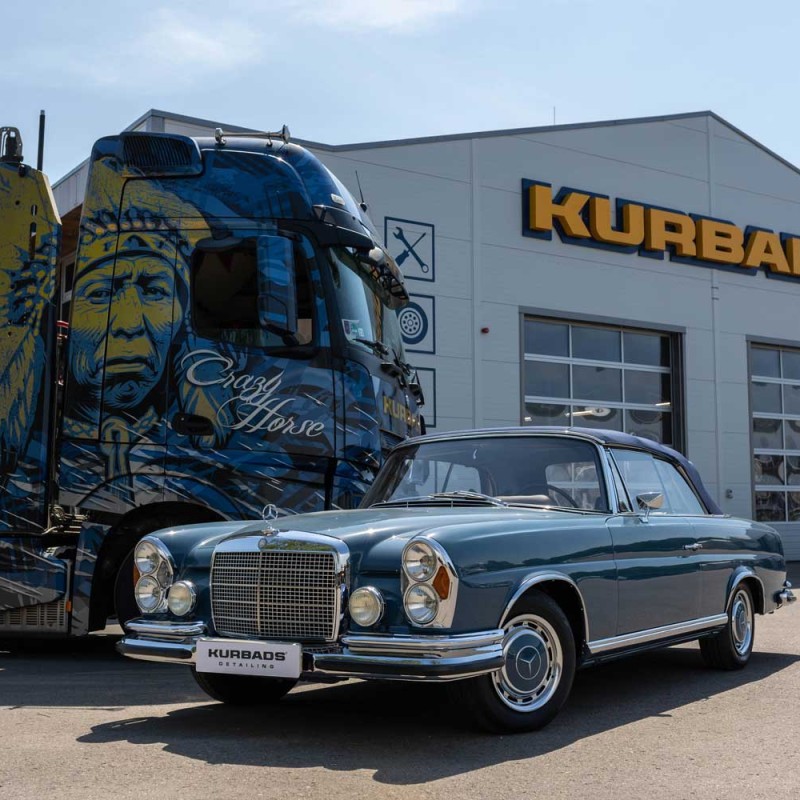A cursory glance at the accompanying images would lead a non-expert to believe they are looking at the first or ‘original’ Ford Mustang, so prevalent in posters, cinema and on souvenir mugs. In fact however, we are dealing with the first serious facelift in the history of Ford’s legendary muscle car. When comparing the 1965 and 1967 Mustangs, the main thing that catches the eye are the different fog lights, which became a must-have feature on the GT version. But even the most keen observer might miss the fact that the 1967 model is larger than its predecessor, and not just for reasons of comfort. It was this year’s Ford Mustang that became the first to feature the so-called big-block V8 engine with a displacement unrivalled to this day – 7 litres. Large-displacement engines were of course also found in later Mustang models, but in 1967 it was a giant leap from the small-block 4.7-litre engines introduced in the first generation. So it was only in 1967 that the Ford Mustang really became a true muscle car.
How the Ford Mustang became a real muscle car

A seven-litre engine in a small convertible made an already successful Ford product even more desirable.
Chasing the origins of the engine
The largest standard Mustang engine was a 6.4-litre, or 390 cubic-inch, V8 with 320 horsepower, but the top-of-the-range unit is easily recognizable by the Cobra lettering on the air filter housing. The seven-litre engine no doubt found its way into the engine bays of Carroll Shelby’s masterpieces, both street and race cars, including the legendary Ford GT40 that took the top three places in the 1966 24 Hours of Le Mans. The engine displacement was not chosen by coincidence. 7 liters, or 427 cubic inches, was the maximum volume allowed by the technical regulations for several road races, including Nascar. Since the epic powertrain was reserved for the Ford Mustang Shelby GT500, whose bonnet was adorned with various air vents for improved cooling of the engine compartment, it is likely that the sleek convertible met its current engine at some later point. Combining and swapping engines is not uncommon among Mustang enthusiasts, as evidenced by the touching attempt to return the V8’s cast-iron block to its original blue colour. Another nuance is that almost all Shelby GT500s at the time were released with a fastback body. The Ford Mustang model register says that only one GT500 convertible was produced in 1967, and it’s unlikely to be this one. The letter S in the VIN number clearly indicates that the convertible had a 6.4-liter engine in its original form.
Four gears and no automatics
Looking into the interior of the convertible, we see the first steering wheel in Mustang history with a cushioned ‘safety’ centre section. Three-point seat belts only became mandatory in 1968, before then they were an option on the model. Along with the facelift, the Mustang’s interior started to feature the brushed aluminium dashboard trim shown here and a dashboard gauge cluster with tachometer and additional gauges previously included in the so-called Rally Package. The De Luxe interior, seen here, is a relatively rare option, with light leather upholstery that harmonises perfectly with the off-white vinyl roof and the delightful Dark Moss body colour. Despite the huge engine capacity and the popularity of automatics in America, the driver of this convertible had to handle more than 300 horsepower using the classic three pedals and a four-speed manual gearbox. If this number of gears seems modest for such a task, it is worth knowing that the Mustang’s standard gearbox at the time had only three speeds. The Mustang GTA, or GT/A, where the letter A stood for automatic or rather the automated Select Shift Cruise-o-Matic transmission, was produced for only one year in this generation, 1967, and there were no automatics at all for the seven-litre engines.
Year of Bullitt
Interestingly, Ford Mustang godfather Lee Iacocca initially disliked the facelifted model, although he himself oversaw the completion of its design from the side air vents to the square mirrors (the original Mustang Mk I had round mirrors). The wider and deeper radiator grille made the car look visually stronger, while the increased wheel track improved stance and handling. New, curved taillights gave the sports car a more premium look. The car could be ordered in 28 different colors, the standard convertible was priced at $2898, and despite external and internal competition from the Chevrolet Camaro, Mercury Cougar, Pontiac Firebird and Plymouth Barracuda, Ford’s three plants produced 472,121 Mustangs during that year, of which 44,808 were convertibles. Within a year, the elegant, if totally non-functional, grille would disappear from the side of the Mustang, and minimal cosmetic changes would, as usual, be made to Ford’s best-seller annually. In the same year, this ‘in-between generation’ Mustang would take cinema screens by storm, with Steve McQueen’s Frank Bullitt chasing the bad guys through the streets of San Francisco in a moss-green Ford Mustang GT Fastback. The Mustang would grow in size and power through the late 1960s, with the legendary Mach 1 and Boss 302 modifications, before the fourth and final iteration of the first-generation Ford Mustang would arrive in 1970.

